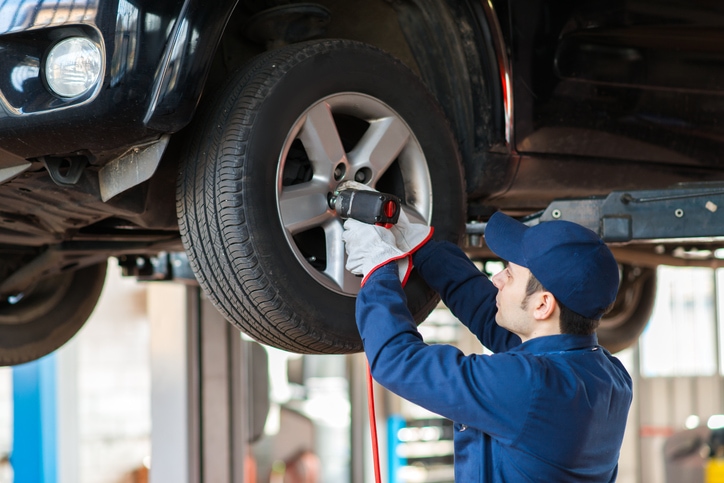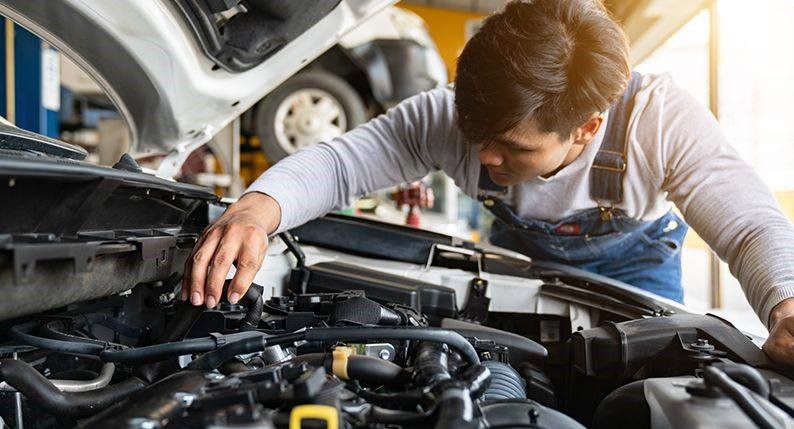Featured

When it concerns automobile repairs, one of the most substantial choices you'll deal with is whether to select Original Equipment Manufacturer (OEM) parts or aftermarket parts. Both alternatives supply distinct advantages, however they also include some trade-offs. Recognizing the distinctions in between these 2 kinds of components can help you make a much more informed decision, guaranteeing your automobile remains in leading form while fitting within your budget plan. Listed below, we check out the benefits and considerations of both OEM and aftermarket parts to assist you select the right option for your following car repair service.

What Are OEM Components? When it was first constructed, OEM components are made by the very same business that manufactured the parts in your vehicle. They are designed specifically for your make and version, making certain best compatibility and premium efficiency. Considering that OEM components are the exact same ones utilized in the original assembly of your lorry, they often tend to satisfy the same high requirements set by the maker.
One of the key advantages of selecting OEM components is the assurance of top quality and reliability. These components are frequently backed by a service warranty, providing protection versus issues or very early failing. If your lorry is still under guarantee, using OEM components for repair work can aid guarantee that your guarantee continues to be valid. Additionally, due to the fact that OEM parts are made to fit exactly, there's less risk of installation concerns or future problems.

What Are Aftermarket Parts? Aftermarket components, on the other hand, are produced by third-party manufacturers that may not be directly affiliated with the automobile's initial maker. These parts are developed to fit a range of automobiles and are usually cheaper than OEM parts. While numerous aftermarket parts are of premium quality, they can differ substantially between suppliers.
The most considerable benefit of aftermarket parts is their cost-effectiveness. Since these parts are mass-produced and do not have the same overhead costs as OEM parts, they are typically valued lower. In addition, aftermarket components can offer boosted performance or aesthetic improvements over OEM parts. Aftermarket exhaust systems or suspension parts might offer much better efficiency or an extra hostile look contrasted to factory-installed parts.
Benefits of OEM Components. Guaranteed Fit and Top quality: OEM parts are designed to satisfy the specific specifications of your automobile, making sure a perfect fit and preserving the efficiency standards that the supplier intended. Guarantee: Many OEM parts feature a warranty, using comfort in situation the part is faulty or stops working too soon. Resale Worth: If you intend on selling your vehicle, making use of OEM parts can aid keep its resale value given that potential buyers typically search for lorries that have actually been fixed with initial parts. Vehicle Stability: Utilizing OEM parts helps ensure that your lorry proceeds to carry out as intended by the manufacturer, keeping it in optimal condition. Advantages of Aftermarket Components. Lower Rate: Aftermarket components are commonly extra budget friendly, which can be a substantial consideration if you're on a budget or wanting to conserve cash on fixings. Selection and Personalization: Aftermarket components provide a variety of alternatives, particularly for efficiency upgrades or cosmetic changes, allowing you to individualize your automobile or enhance its performance. Wide Accessibility: Aftermarket parts are generally much easier to find than OEM parts, particularly for older cars or hard-to-find components. Performance Enhancements: In many cases, aftermarket parts are designed to offer premium efficiency, such as better brakes or higher-flow air filters that increase horsepower. Downsides of OEM Components. Greater Cost: OEM parts have a tendency to be extra costly than aftermarket choices, which might be a downside for auto proprietors on a limited budget. Minimal Options for Modification: OEM parts are designed to change the initial elements without any improvements, so they might not provide efficiency upgrades or aesthetic changes. Accessibility: Depending on the make and design of your vehicle, OEM components can sometimes be challenging to discover, specifically if your cars and truck is older or has actually been discontinued. Drawbacks of Aftermarket Parts. Inconsistent High quality: The quality of aftermarket parts can differ greatly between producers. While some are made with top quality materials, others might be less durable or poorly built, which can result in faster wear and tear. Potential Fitment Issues: Aftermarket parts may not always fit your vehicle as specifically as OEM parts, resulting in feasible compatibility issues or extra job during setup. Service Warranty Problems: Using aftermarket parts may invalidate your maker's warranty or lead to issues if a failure takes place that relates to the aftermarket part. Just how to Decide Between OEM and Aftermarket Components. Choosing between OEM and aftermarket parts relies on a number of elements, including your budget plan, the age and problem of your automobile, and your certain repair service demands.
Budget: If expense is your key worry, aftermarket parts are often the a lot more inexpensive selection. It's crucial to consider the long-lasting value of your decision. If you choose for a cheaper aftermarket part that does not execute well or requires frequent substitutes, you may end up investing more in the future. Automobile Age and Condition: For more recent cars still under warranty or those in exceptional problem, OEM parts are typically suggested to keep the auto's honesty and guarantee it proceeds to operate as planned. For older automobiles, aftermarket parts might offer a more economical solution without jeopardizing efficiency. Repair Kind: Some repair work, particularly safety-related components like air bags or brake systems, are best handled with OEM components to guarantee ideal safety and security and integrity. For non-essential repair work or efficiency upgrades, aftermarket components may supply a good equilibrium in between cost and efficiency. Conclusion. The choice between OEM and aftermarket parts depends on your details requirements, choices, and budget plan. While OEM parts provide ensured high quality and dependability, aftermarket parts offer price financial savings and the opportunity for efficiency enhancements or customization.
Latest Posts
Keep Your Carpet Looking Its Finest with Easy, Expert Treatment
Published Apr 20, 25
1 min read
Open Exclusive Discounts with WyHy's Love My Cooperative credit union Rewards
Published Apr 20, 25
1 min read
Change Your Home with Top Quality Flooring Solutions
Published Apr 19, 25
1 min read
More
Latest Posts
Keep Your Carpet Looking Its Finest with Easy, Expert Treatment
Published Apr 20, 25
1 min read
Open Exclusive Discounts with WyHy's Love My Cooperative credit union Rewards
Published Apr 20, 25
1 min read
Change Your Home with Top Quality Flooring Solutions
Published Apr 19, 25
1 min read